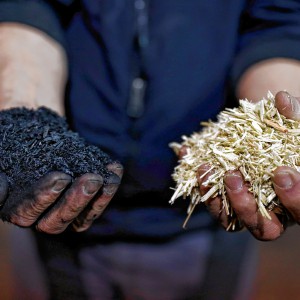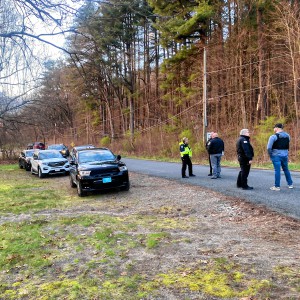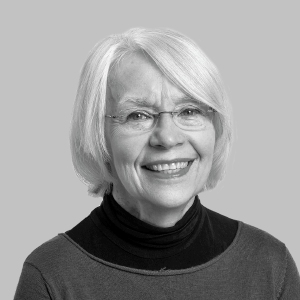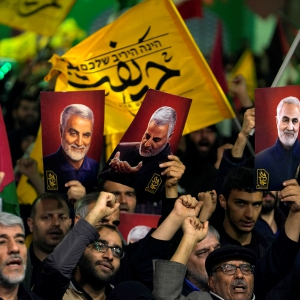Columnist Lawrence B. Siddall offers a personal glimpse of Iran
| Published: 04-05-2017 9:22 PM |
It seems that the news we hear about Iran these days is mostly negative. This is troubling to me as someone who has been there because the media doesn’t tell us much about the Iranian people.
Since my brief visit there almost two years ago, I have given several presentations and spoken to anyone who would listen about my experience. I still continue to meet people who are surprised by what I tell them.
My personal interest in Iran goes back to 1956 when I visited the country during an overland trip in a VW Beetle from Europe to India. I have always wanted to return but didn’t seriously consider it until recently. However, given the negative press, I assumed that travel to Iran was off limits. Then I saw a notice in The New York Times travel section for a trip to Iran the paper was sponsoring. Encouraged by this, I sent for information, but in the end decided to sign up with Intrepid Travel because it leads smaller groups that are international, plus its two-week tour was less expensive.
It turned out to be a highly rewarding trip. Iran is a fascinating country whose history goes back to 550 BCE when Cyrus the Great ruled the ancient Persian Empire. In 1935 the country changed its name to Iran, a variation of Aryan, the name of the early tribes who settled the region.
Three times the size of France, much of the country is a desert plateau and relies heavily on irrigation to sustain the cities’ parks, gardens and trees that line their boulevards. In fact the English word paradise comes directly from the Persian, meaning walled garden with flowing water.
When I am asked about my impressions, two immediately come to mind. Sandwiched between Iraq to the west and Afghanistan and Pakistan to the east, Iran is perhaps one of the safest countries in the Middle East due to high security, both at its borders and internally. However, security personnel are never seen.
My second impression is that the people are among the friendliest and most hospitable I’ve ever encountered on my many travels. They will often come up to you on the street and ask where you are from, and if you are walking in a park and pass a group having a picnic, you may well be invited to join them.
The government in Iran has been a theocracy since the Islamic revolution in 1979. The Ayatollah Khomeini is the supreme ruler, appointed by a religious committee. The president, however, is elected by popular vote. The country observes Sharia Muslim law. There have been a parliament and a constitution since 1906, but the constitution was revised after the revolution to give more power to the clergy.
Article continues after...
Yesterday's Most Read Articles
 Locking up carbon for good: Easthampton inventor’s CO2 removal system turns biomass into biochar
Locking up carbon for good: Easthampton inventor’s CO2 removal system turns biomass into biochar
 Northampton man will go to trial on first-degree murder charge after plea agreement talks break down
Northampton man will go to trial on first-degree murder charge after plea agreement talks break down
 Police report details grisly crime scene in Greenfield
Police report details grisly crime scene in Greenfield
 Area property deed transfers, April 25
Area property deed transfers, April 25
 Advancing water treatment: UMass startup Elateq Inc. wins state grant to deploy new technology
Advancing water treatment: UMass startup Elateq Inc. wins state grant to deploy new technology
 Super defers Amherst middle school principal pick to successor; one finalist says decision is retaliation for lawsuit
Super defers Amherst middle school principal pick to successor; one finalist says decision is retaliation for lawsuit
Many aspects of daily life are highly regulated. Women are required to wear head scarves and loose-fitting garments over leggings or slacks. (This also includes tourists.)
Many Iranian women wear the black, full-length chador. Another injunction is that a man should not shake hands with a woman unless she initiates it. The fact that alcohol is illegal can be a real disappointment for many visitors.
Because of Iran’s current economic policies, foreign credit cards are invalid. This means that tourists must bring a pocket full of cash to pay for meals, souvenirs and any other purchases, requiring several visits to a currency exchange office. However, if you want to buy a beautiful carpet and have it shipped home, your credit cad will be accepted and processed though Dubai.
***
Our tour began in Tehran, where I arrived at 1:00 a.m. from Frankfurt via Lufthansa. Tehran is a huge city with horrendous traffic but surprisingly almost no litter. We stayed here just one day, so sightseeing was limited to a 19th-century mosque, a 200-year-old palace and a charming tea house. There would be time at the end of the trip to visit one of the city’s outstanding museums. Our itinerary would take us to a variety of cities and historic sites throughout the country. I will focus on three cities.
We went first to Shiraz in southern Iran, considered the cultural capital of the country. Known for its institutions of learning and home to famous poets, the city is also prized for its lush gardens and centuries-old wine-making; its reputation for fine red wine was already established by the 9th century CE. Since alcohol is illegal, many vineyards have turned to the production of grapes and raisins. However, some wineries flourish in an underground economy. We were told that if you have the right telephone number you can have wine delivered to your door.
Near Shiraz are the ruins of Persepolis, at one time considered the grandest palace in the ancient world. While here I had the pleasure of meeting an Iranian family and had my photo taken with them. The older of two daughters was to graduate the next day from the University of Shiraz, having majored in molecular biology. She spoke excellent English and said she hoped to study some day in America.
Yazd was another interesting city, not far from the Afghan border. For centuries it had a large Zoroastrian community and is home to the Fire Temple, one of this ancient religion’s holy sites. Believing that fire is sacred, the fire inside has been burning for over 1,000 years. Yazd is also known for its homes with distinctive roof-top wind towers. This architectural marvel serves to divert air that is then circulated throughout the house to help cool it during the hot summer months. Yazd also claims that Marco Polo passed through here on his way to China.
My favorite city was Isfahan, renowned for having the second largest central square in the world. (Tiananmen Square in Beijing may be the largest.) It dates from the late 1500s and early 1600s during the reign of Shah Abbas I. Enclosed by a two-story arcade with a myriad of shops, tea houses and cafes, the square is now a beautiful park where one can stroll and picnic. Centuries ago royalty played polo here.
The centerpiece of the square is the Imam Mosque, whose construction took 26 years and was finally completed in 1628. The entrance faces the square, while the mosque itself is behind the arcade and is positioned to face Mecca. Decorated with multicolored ceramic tiles with a predominance of blue, the effect is indeed one of compelling beauty.
Under Shah Abbas I, Isfahan became the capital of Persia, ushering in a cultural renaissance that took place as the shah embarked on ambitious building projects. To supplement the contribution of local architects and builders, he also brought in artisans from abroad, including 300 craftsmen from China. Because Isfahan was situated on a major trade route, travelers came from far and wide. Many left accounts of their visits that reflected Isfahan’s growing fame as one of the most beautiful cities in the East.
While we were visiting another nearby holy site I met an imam, or religious teacher, who was there with a small group of young women students. He spoke quite good English, so we were able to have a brief chat. He graciously agreed to have our picture taken together.
***
One custom I found the most foreign was sitting on the floor during a meal. On two occasions we had supper in private homes, where there was little furniture and carpets were spread everywhere. First a long narrow table cloth was laid down. Then plates and utensils were brought in followed by the food. A typical meal consists of roast chicken, lamb or beef, accompanied by rice, flat bread, yogurt and fresh vegetables, usually sliced tomatoes and cucumbers. Though sometimes cushions are available, eating in a cramped position is a challenge. Many restaurants have platforms for customers who prefer this style of dining, ranging in size to accommodate from two to 20 diners.
We always sat at tables for our meals in restaurants. Since alcohol is illegal, we drank a variety of juices, colas and imitation beer. Bottled water was always on the table. Tea is preferred over coffee. In many restaurants, boxes of Kleenex served as napkins. Iranians like to eat dinner between 8 and 9 in the evening. Our guide took us to a variety of restaurants, including several classy ones, and with few exceptions we had excellent meals. Eating out is clearly a popular social activity.
***
This trip definitely succeeded in expanding my appreciation of Iran, if only for a two-week glimpse. One regret is that, even though English is widely spoken, I wasn’t able to talk more personally with people. Yet there was no mistaking that Iranians love Americans and many people we met eagerly told us they had a relative or friend living in the U.S.
Once again a trip like this confirmed my belief that if we want to improve international understanding, we shouldn’t depend only on what we hear in the media.
Lawrence Siddall, of Amherst, has been an enthusiastic traveler for many years. Following his retirement as a psychotherapist, he joined the Peace Corps and taught English in a high school in Poland from 1997 to 1999. In 2008 he published a memoir about what he refers to as a late-life adventure. He can be reached at lsiddall@crocker.com.
]]>

 Columnist Susan Wozniak: Rising costs long ago swamped hippie ideal
Columnist Susan Wozniak: Rising costs long ago swamped hippie ideal Guest columnist Rudy Perkins: Dangerous resolution pins ‘aggression’ on Iran
Guest columnist Rudy Perkins: Dangerous resolution pins ‘aggression’ on Iran David Kirk: Northampton schools spending beyond means
David Kirk: Northampton schools spending beyond means Richard Clifford: We all need to look in a mirror first
Richard Clifford: We all need to look in a mirror first
